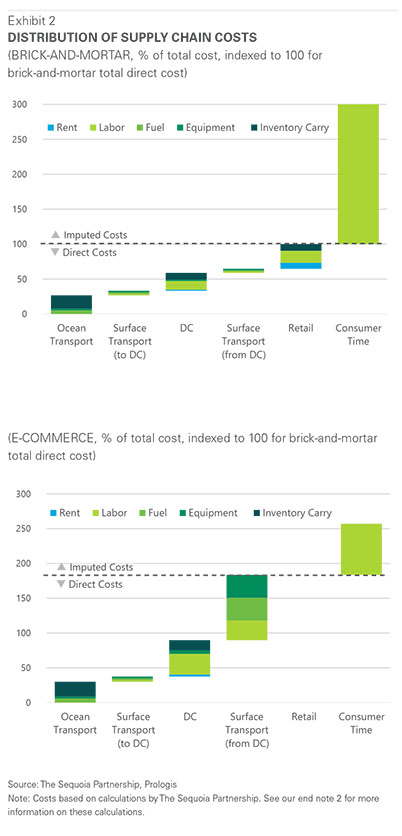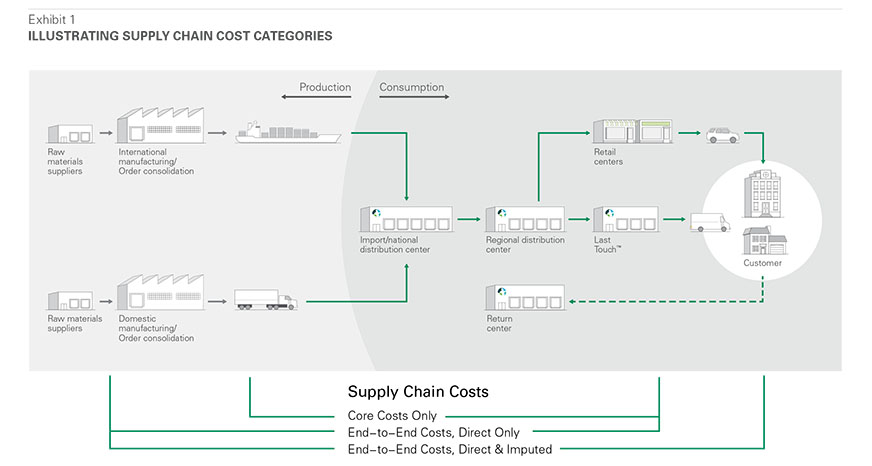Prologis, a leading logistics real estate company based in San Francisco, has a new paper on how demand drivers behind the fast-growing logistics real estate industry are changing and their future implications.
“Unlocking Supply Chain Value” notes that global supply chains are constantly evolving, changing companies' real estate requirements.

This report is the second installment of a three-part series that delves into the role of logistics real estate within supply chains, explains Prologis' Head of Research, Chris Caton, who adds that growth in the logistics real estate sector is outpacing growth in the economy overall, largely driven by consumption and the rise of e-commerce.
“In the first paper of the series, we found that the rise of e-commerce is pulling supply chains closer to consumers, driving up demand for more costly, infill logistics space,” he says.
In this paper, researchers build on these insights to examine a key question: Are these new network strategies sustainable?
According to Caton the answer is “yes” for two key reasons:
- E-commerce delivers substantial value to consumers. E-commerce has given rise to Synchronized Commerce, where the pick/pay/deliver portion of supply chains is performed by retailers instead of consumers. Efficiency gains, greater variety, and greater convenience are byproducts of this shift.
- Logistics real estate can create value far beyond its cost: Big upgrades in logistics real estate are a small cost in the context of the total supply chain (less than 5% of spend and 25-50 bps of revenue), and yet they can significantly improve service levels and cost management.
“May companies still feel that they are spending too much on real estate,” says Caton. “But when examined closely, we see that total landed costs are addressed in a genuine sustainable way.”
Prologis Research partnered with The Sequoia Partnership, a leading supply chain research group, to estimate the total cost of supply chains piece by piece. The result is a new model for evaluating the tradeoffs companies must make in their supply chains to optimize costs and address rising demands on service levels. This model also factors in the growing influence of e-commerce on key components of end-to-end supply chain spend: transportation, labor, retail operations, and logistics real estate.
Based on this analysis, several additional findings emerged that can help “future-proof” supply chains and logistics operations:
- E-commerce intensifies the focus on distribution center location strategy. Relative to brick-and-mortar, e-fulfilment requires the re-allocation of 75 percent of supply chain costs and prompts an approximate 400 percent increase in spending on distribution centers and transportation to consumers.
- Decentralized e-fulfilment distribution is the most cost-effective model. Total cost of supply is about 15-20% less than self fulfilment in a traditional retail environment. These cost savings are amplified by higher service levels that provide a competitive advantage.
- New methods of e-fulfilment (e.g., click-and-collect) add to logistics demand in the same manner as traditional e-fulfilment, which is 2.5-3 times that of a pure brick-and-mortar retailer.
- Reconfigured supply chains are intensifying the need for labor and creating significant employment opportunities in local communities.

Caton told SCMR that the third and final installment of the Prologis study will “play forward” to examine fuel, labor, and role technology will play to cut costs.
SC
MR


Latest Supply Chain News
- How CPG brands can deliver on supplier diversity promises
- How S&OP provides the answer to in-demand products
- AI, virtual reality is bringing experiential learning into the modern age
- Humanoid robots’ place in an intralogistics smart robot strategy
- Tips for CIOs to overcome technology talent acquisition troubles
- More News
Latest Podcast

 Explore
Explore
Business Management News
- How CPG brands can deliver on supplier diversity promises
- How S&OP provides the answer to in-demand products
- AI, virtual reality is bringing experiential learning into the modern age
- Tips for CIOs to overcome technology talent acquisition troubles
- There is still work to do to achieve supply chain stability
- Blooming success: The vital role of S&OE in nurturing global supply chains
- More Business Management
Latest Business Management Resources

Subscribe

Supply Chain Management Review delivers the best industry content.

Editors’ Picks





